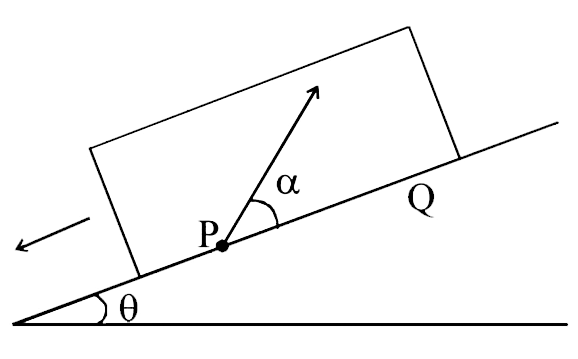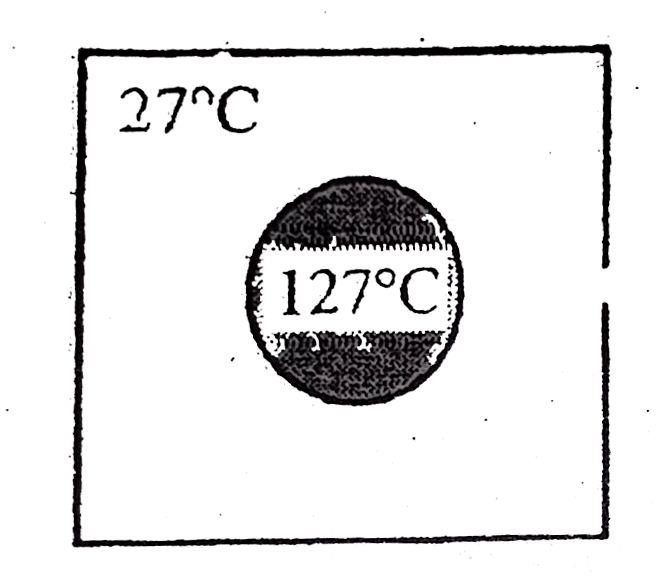If ilm is kept in a wooden box, alpha paritlces from a radiactive source outside the box cannot expose the film but beta particles can. Explain.
Step by step video & image solution for If ilm is kept in a wooden box, alpha paritlces from a radiactive source outside the box cannot expose the film but beta particles can. Explain. by Physics experts to help you in doubts & scoring excellent marks in Class 12 exams.
Topper's Solved these Questions
- BOOK - PHYSICS GALAXY - ASHISH ARORACHAPTER - NUCLEAR PHYSICS AND RADIOACTIVITYEXERCISE - Concptual MCQs48videos
NUCLEAR PHYSICS AND RADIOACTIVITY
- BOOK - PHYSICS GALAXY - ASHISH ARORACHAPTER - MAGNETIC EFFECTS OF CURRENT AND MAGNETISMEXERCISE - U.N.P79videos
MAGNETIC EFFECTS OF CURRENT AND MAGNETISM
- BOOK - PHYSICS GALAXY - ASHISH ARORACHAPTER - PHOTOELECTRIC EFFECT AND MATTER WAVESEXERCISE - Unsolved numerical problems42videos
PHOTOELECTRIC EFFECT AND MATTER WAVES
Similar Questions
A calorimater is kept in a wooden box to insulate it thermally from the surroundings .Why is it neccessery?
View SolutionA large , heavy box is sliding without friction down a smooth plane of inclination θ . From a point P on the bottom of the box , a particle is projected inside the box . The initial speed of the particle with respect to the box is u , and the direction of projection makes an angle α with the bottom as shown in Figure .
(a) Find the distance along the bottom of the box between the point of projection p and the point Q where the particle lands . ( Assume that the particle does not hit any other surface of the box . Neglect air resistance .)
(b) If the horizontal displacement of the particle as seen by an observer on the ground is zero , find the speed of the box with respect to the ground at the instant when particle was projected .
 View Solution
View Solution
Knowledge Check
- Question 1 - Select One
Those substances through which things can be seen, are called transparent. On the other hand, there are some materials through which you are not able to see. These materials are called opaque. The materials through which objects can be seen, but not clearly, are known as translucent. We can therefore group materials as opaque, transparent and translucent. Shopkeepers usually prefer to keep eatables in transparent containers of glass or plastic so that buyers can easily see these items. Otherwise you cannot tell what is kept in a closed wooden box, a cardboard or a metal container.
Which of the following bodies cast sharp shadows when placed in the part of light?ATransparentBTranslucentCTransparent and translucentDOpaque - Question 2 - Select One
At the suggestion of Earnest Rutherford, hans Geiger and ernest Marsden bombarded a thin gold foil by α-particles from a polonium source. It was expected that α-particles would go right through the foil with hardly any deflection. Although, most of the alpha particles indeed were not deviated by much, a few were scattered through veryi large angles. Some were even scattered in the backward direction. The nly way to explain the results, rutherford found, was to picture an atom as being compoed of a tiny nucleus in which its positive charge and nearly all its mass are concentrated. Scattering of α-particles is proportional to target thickness and is inversely proportional to the fourth power of sin(θ2), where,θ is scattering angle. Distance of closest approach may be calculated as:
rmin=Z1Z2e24πε0K
where, K=kinetic energy of α-particles.
Q. Which of the following quantities will be zero for alpha particles at the point of closest approach to the gold atom, in Rutherford's scattering of alpha particles?AAccelerationBKinetic energyCPotential energyDElectrical energy - Question 3 - Select One
At the suggestion of Earnest Rutherford, hans Geiger and ernest Marsden bombarded a thin gold foil by α-particles from a polonium source. It was expected that α-particles would go right through the foil with hardly any deflection. Although, most of the alpha particles indeed were not deviated by much, a few were scattered through veryi large angles. Some were even scattered in the backward direction. The nly way to explain the results, rutherford found, was to picture an atom as being compoed of a tiny nucleus in which its positive charge and nearly all its mass are concentrated. Scattering of α-particles is proportional to target thickness and is inversely proportional to the fourth power of sin(θ2), where,θ is scattering angle. Distance of closest approach may be calculated as:
rmin=Z1Z2e24πε0K
where, K=kinetic energy of α-particles.
Q. Alpha particles that come closer to the nuclei:Aare deflected moreBare deflected lessCmake more collisionDare slowed down more.
At the suggestion of Earnest Rutherford, hans Geiger and ernest Marsden bombarded a thin gold foil by α-particles from a polonium source. It was expected that α-particles would go right through the foil with hardly any deflection. Although, most of the alpha particles indeed were not deviated by much, a few were scattered through veryi large angles. Some were even scattered in the backward direction. The nly way to explain the results, rutherford found, was to picture an atom as being compoed of a tiny nucleus in which its positive charge and nearly all its mass are concentrated. Scattering of α-particles is proportional to target thickness and is inversely proportional to the fourth power of sin(θ2), where,θ is scattering angle. Distance of closest approach may be calculated as:
rmin=Z1Z2e24πε0K
where, K=kinetic energy of α-particles.
Q. Rutherford's α-particle scattering led to the conclusion that:View SolutionAt the suggestion of Earnest Rutherford, hans Geiger and ernest Marsden bombarded a thin gold foil by α-particles from a polonium source. It was expected that α-particles would go right through the foil with hardly any deflection. Although, most of the alpha particles indeed were not deviated by much, a few were scattered through veryi large angles. Some were even scattered in the backward direction. The nly way to explain the results, rutherford found, was to picture an atom as being compoed of a tiny nucleus in which its positive charge and nearly all its mass are concentrated. Scattering of α-particles is proportional to target thickness and is inversely proportional to the fourth power of sin(θ2), where,θ is scattering angle. Distance of closest approach may be calculated as:
rmin=Z1Z2e24πε0K
where, K=kinetic energy of α-particles.
Q. Rutherford's scattering formula fails for vary small scattering angles because:View SolutionThose substances through which things can be seen, are called transparent. On the other hand, there are some materials through which you are not able to see. These materials are called opaque. The materials through which objects can be seen, but not clearly, are known as translucent. We can therefore group materials as opaque, transparent and translucent. Shopkeepers usually prefer to keep eatables in transparent containers of glass or plastic so that buyers can easily see these items. Otherwise you cannot tell what is kept in a closed wooden box, a cardboard or a metal container.
List out translucent object among the following.View SolutionA silver ball painted black is kept inside a box which is maintained at a temprature of 27∘C the ball is maintained initially at a constant temperature of 127∘C by making the radiation to fall on it through a small hole in the box latter on due to some chemical reaction between silver and paint the paint uniformly evaporates from the surface of ball exposing the silver if same amount of radiation continues to fall on ball then temperature of ball as a function of time is hown as :(Assume emissivity of silver is zero and paint to be black body also assume radiation to be the only mode of heat transfer)
 View Solution
View SolutionThe cyclotron is a device which is used to accelerate charged particles such as protons, deutrons, alpha particles, etc. to very high energy. The principle on which a cyclotron works is based on the fact that an electric field can accelerate a charged particle and a magnetic field can throw it into a circular orbit. A particle of charge +q experiences a force qE in an electric field E and this force is independent of velocity of the particle. The particle is accelerated in the direction of the magnetic field. On the other hand, a magnetic field at right angles to the direction of motion of the particle throws the particle in a circular orbit in which the particle revolves with a frequency that does not depend on its speed. A modest potential difference is used as a sources of electric field. If a charged particle is made to pass through this potential difference a number of times, it will acquire an enormous by large velocity and hence kinetic energy.
Which of the following cannot be accelerated in a cyclotron?View Solution

